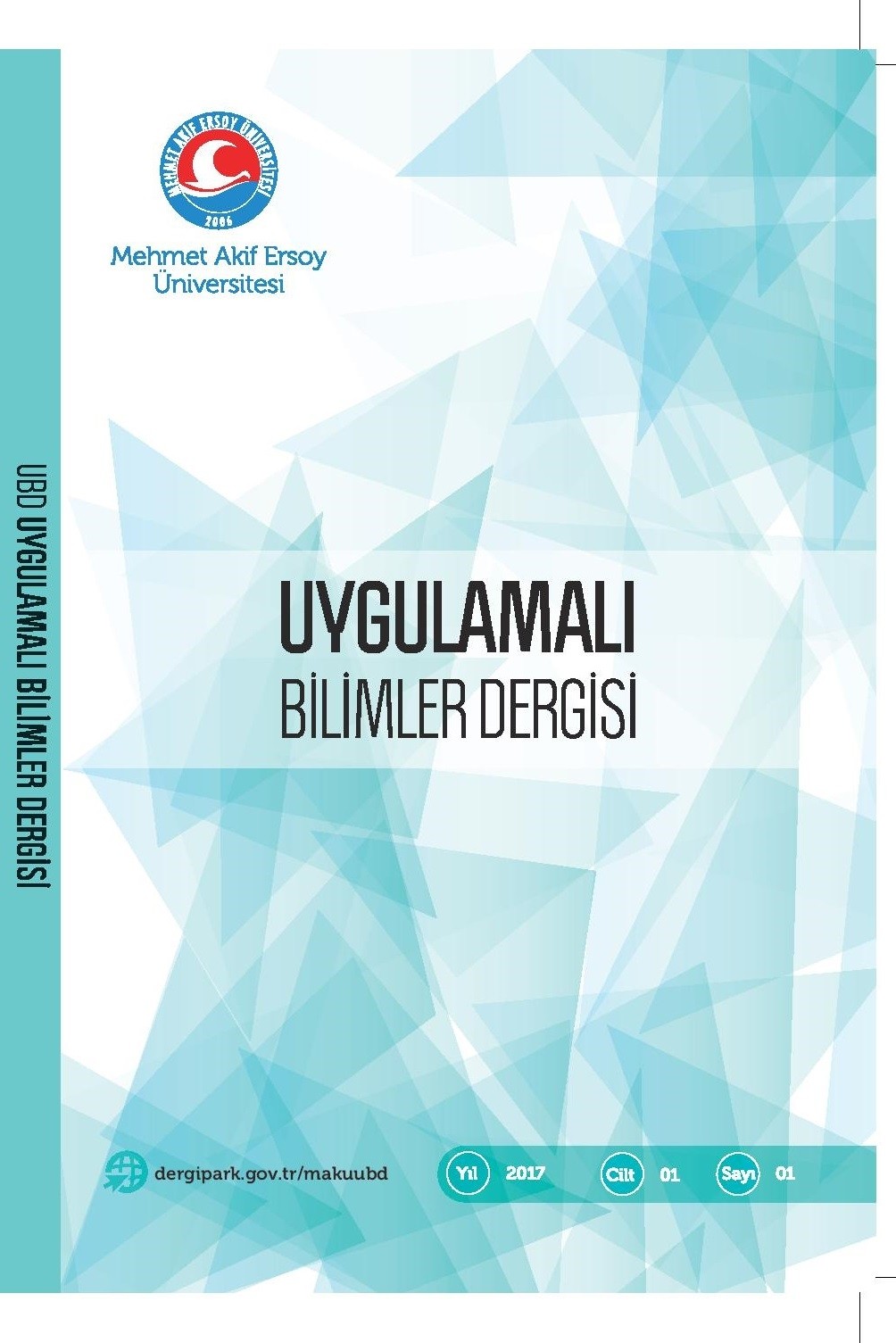Eş Zamanlı Topla-Dağıt Döngüsel Dağıtım Modeli ve Endüstriyel Bıçak Bileme Fabrikası Örnek Uygulaması
Giderek artan küresel rekabet ortamında şirketler, tedarik zinciri süreçlerini en verimli ve etkin şekilde yönetmek için çeşitli yöntemlere başvurmaktadır. Bu konuda önemli yöntemlerden biri dağıtım ağlarının doğru tasarlanması yönündedir. Dağıtım ağı tasarımında önemli bileşenler tesislerin yer seçimi ve araçların rotalanmasıdır. Mümkünse, dağıtım maliyetini en aza indirmek amacıyla, yer seçimi ve rotalama problemindeki iki karar beraber dikkate alınmalıdır. Ancak, pratikte birçok sektörde yer seçimini etkileyen çok daha farklı ve ağırlığı fazla faktörler bulunabilmekle beraber, zamanla değişen ihtiyaçlar rotalama noktalarının değişmesine neden olabilmektedir. Ayrıca bu çalışmanın başlangıçta yapılmadığı durumlarda, yer değiştirme maliyeti çok daha yüksek olacağı için, çalışmalar sadece rotalama problemi olarak ele alınabilmektedir. Araç rotalama problemi, bir veya birkaç noktadan, belirli müşterilere ürün dağıtımı veya toplanması olarak tanımlanabilir. Bu problemlerde, araç kapasiteleri ve müşterilerin servis süresi gibi kısıtlar dikkate alınarak etkin kullanım hedeflenmektedir. Araç rotalama problemleri, birçok alanda gerçek hayatta karşılaşılan problemlerdir. Bu durum bu konuda çalışmalar yapılmasını ve verimli sonuçlar ortaya koyan algoritmalar sunulmasında fayda sağlamıştır. Bu çalışmada ise, karşılaşılan problemin çözüme ulaşması adına, model eş zamanlı topla-dağıt döngüsel araç rotalama problemi olarak kurgulanmıştır. Eş zamanlı topla-dağıt döngüsel araç rotalama problemi; müşterilerin dağıtım ve toplama taleplerinin, başlangıç ve bitiş noktaları aynı (işletme) olacak şekilde araçlar için belirli bir rota belirlenerek eş zamanlı olarak karşılandığı bir problemdir. Bu çalışma kapsamında, endüstriyel bıçak bileme fabrikası üzerinden 8 farklı şehirde 20 müşteriye lojistik hizmet oluşturulması üzerine rotalama problemi ele alınmıştır. Probleme konu olan şirket, mevcutta var olan yöntemde ürün lojistiği kargo firmaları ile sağlanmaktadır. Maliyetleri düşürmek adına şirketin kendi lojistik ağının kurulması üzere çalışma yapılmıştır. Bu çalışmada, minimum sayıda araç kullanımı ile toplam kat edilen mesafenin minimumda tutulması ile birlikte, kısıtlar göz önüne alınarak, minimum maliyet hedeflenmiştir. Problem çözümü için doğrusal programlama kullanılmış ve GAMS üzerinden çözüme ulaşılmıştır.
Application of Vehicle Routing Problem with Simultaneous Pickup and Delivery
In an increasingly global competitive environment, companies use a variety of ways to manage their supply chain processes in the most efficient and effective manner. One of the important methods is to design the distribution networks correctly. Important components in the distribution network design are the location selection of facilities and routing of vehicles. Where possible, two decisions in site selection and routing should be considered together to minimize the cost of distribution. However, in practice, there are many different and weighty factors that affect the choice of place in many sectors, but the changing needs over time may lead to changing routing points. In addition, in the absence of this study at the beginning, since the cost of displacement will be much higher, only studies can be considered as routing problem.Vehicle-routing problem can be defined as product distribution or collection to specific customers from one or several points. In these problems, effective use is aimed by taking into consideration the constraints such as vehicle capacities and customer service time. Vehicle routing problems are real life problems in many areas. This situation has been beneficial in carrying out studies on this subject and presenting algorithms that yield productive results. To solve the problem encountered in this study, the model was created as a vehicle routing problem with simultaneous pickup and delivery. Vehicle routing problem with simultaneous pickup and delivery; It is a problem that the distribution and collection demands of the customers are met simultaneously by setting a specific route for vehicles with the same starting and ending points (firm). Within the scope of this study, routing problem on creating logistics services for 20 customers in 8 different cities over the factory was discussed. The company that is the subject of the problem is provided by the cargo logistics companies in the present case. In order to reduce costs, efforts were made to establish the company's own logistics network. The aim of this study is to keep the total distance traveled to a minimum by using the minimum number of vehicles, and to minimize the costs. Linear programming was used for problem solving and the solution was reached via GAMS.
___
- [1] Düzakın, E., Demircioğlu M. (2009). Araç Rotalama Problemleri ve Çözüm Yöntemleri
- [2] Çetin, S., Gencer, C. (2010). Kesin Zaman Pencereli Eş Zamanlı Dağıtım Toplamalı Araç Rotalama Problemi: Matematiksel Model
- [3] Karaoğlan, İ. (2009). Dağıtım Ağları Tasarımında Yer Seçimi ve Eşzamanlı Topla-Dağıt Araç Rotalama Problemleri
- [4] Atmaca, E. (2012). Bir Kargo Şirketinde Araç Rotalama Problemi ve Uygulaması
- [5] Göksal F. P., Karaoğlan İ., Altıparmak F. (2013). A hybrid discrete particle swarm optimization for vehicle routing problem with simultaneous pickup and delivery
- [6] Yazgan, H. R., Büyükyılmaz R. G. (2017). Eş zamanlı topla dağıt araç rotalama problemine sezgisel bir çözüm yaklaşımı
- [7] Bayrak A., Özyörük B. (2017). Bölünmüş talepli eş zamanlı topla dağıt araç rotalama problemi için karşılaştırmalı matematiksel modeller
- [8] Dantzig, G.B., Ramser, J.H. (1959). The truck dispatching problem
- [9] Toth P., Vigo D. (2002) The vehicle routing problem
- [10] Salhi S., Nagy G. (1999) A cluster insertion heuristic for single and multiple depot vehicle routing problems with backhauling
- [11] Min H., Current J., Schilling D. (1992) The multiple depot vehicle routing problem with backhauling
- [12] Min H. (1989) The multiple vehicle routing problem with simultaneous delivery andpick-up points
- [13] Dethloff J. (2001) Vehicle routing and reverse logistics: The vehicle routing problem with simultaneous delivery and pick-up
- [14] Casco D.O., Golden B.L., Wasil E.A. (1988) Vehicle routing with backhauls: Models, algorithms, and case studies
- [15] Nagy G., Salhi S. (2005) Heuristic algorithms for single and multiple depot vehicle routing problems with pickups and deliveries
- [16] Tang, F. A., Galvao, R. D. (2002) Vehicle routing problems with simultaneous pick-up and delivery service
- [17] Yürek S. S. (2012) Bir otomotiv fabrikasında ürünlerin tedarikçilerinden döngüsel sefer uygulaması ile toplanması problemi
- [18] Khan, M.S., Siddiqui, A.S. (1998) The Radius Method: A Modified Heuristic For The Vehicle Routing Problem
